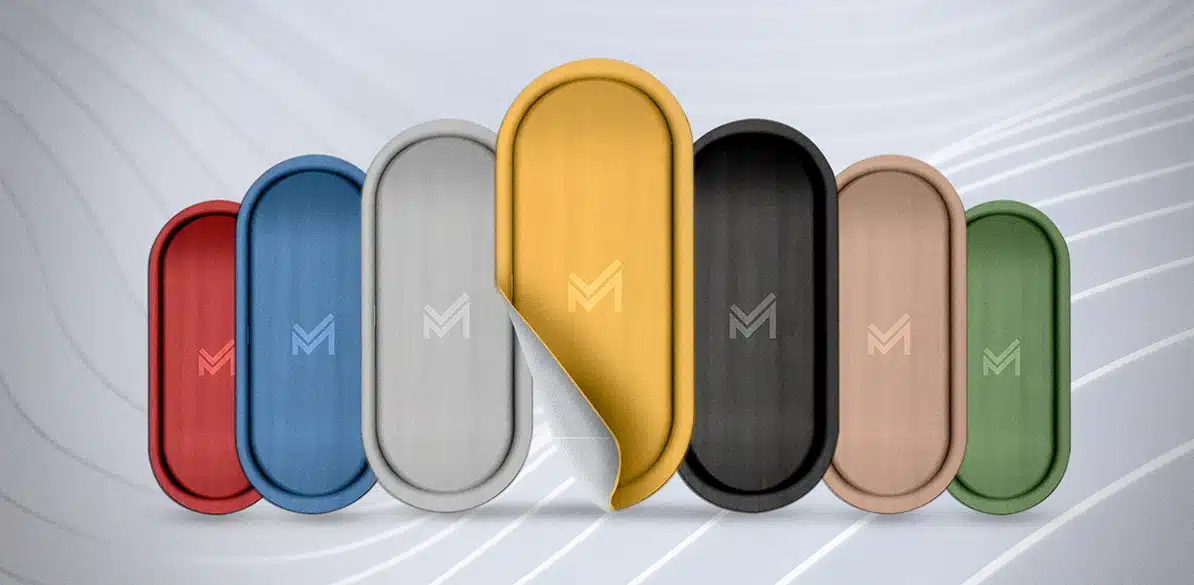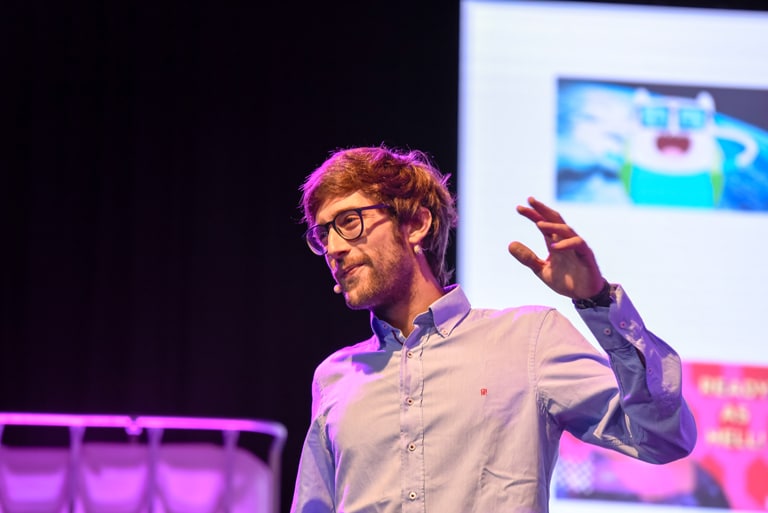Medicsen, a painless alternative to needles
Did you know that it is possible to give insulin to diabetes patients without using a needle?

Medicsen has succeeded in creating something that seemed impossible: the first wearable, needle-free drug delivery device. It comprises a small, two-and-a-half-centimeter smart patch which, using harmless waves that increase the size of the skin’s natural pores, delivers the medication in the amounts that the patient needs.
To find out more about this project, we spoke to Eduardo Jorgensen, a member of Fundación MAPFRE’s Red Innova and CEO and founder of this company, which in 2021 won the fourth edition of the Fundación MAPFRE Social Innovation Awards, in the category of Improving Health and Digital Technology (e-Health).

How did Medicsen come about?
I am a doctor by training, and I had always wanted to be a neurosurgeon. But one day, in my consulting room, I met a girl with diabetes who refused to continue taking insulin. She argued that she couldn’t lead a normal life, that her friends laughed at her, that she couldn’t go on school trips and that she was sick of pricking herself three times a day, more than a thousand times a year. At that point I started to think that we needed to develop technology that could provide a solution to her problem. I called a couple of colleagues and together we designed an initial idea for an artificial pancreas, but we wanted a solution that was non-invasive, which was its most valuable aspect. So we realized we needed software that could predict what was happening to the patient and also a patch-like device that could deliver the drug, but without using a needle. We looked at what technologies we could use and started developing a solution. The idea came up in 2014 and we set up the company in 2015.
What are you currently working on?
The technology behind our patch, which uses ultrasound to increase skin permeability, is called sonophoresis. But what we have accomplished is inventing a part that achieves the sonophoresis effect in a very small space, just 2.5 cm in size. Right now we are at a point where we already have a functional prototype that we are finishing miniaturizing with the results of the studies in pigs. When we have completed the entire process we will move on to the human study, sometime in 2024; this is our goal.
What is the social component of your project?
This initiative has many attributes that can be characterized as social. When it comes to drug administration, needles and cannulas are one of the greatest barriers to patient compliance with treatment goals, and when a patient does not comply, which happens in approximately two out of every three people, it generates 20% more costs for healthcare systems and patients die an average of ten years earlier, as they suffer complications that greatly reduce their quality of life. The girl who left that visit went away without treatment and with the surety of a reduced life expectancy. Our first and most important social benefit is to eliminate needles, that great barrier, to improve treatment compliance and outcomes and, consequently, patient quality of life and life expectancy.
The second social attribute is the elimination of environmental waste. Approximately 16 billion needles are used worldwide each year and these generate a huge amount of environmental waste, not only needles, but also from single-use, disposable delivery devices. This means that insulin pumps and insulin patches are thrown away with their electronics every three days, with the resulting impact on the environment. But these are also hazardous waste because they have come into contact with the inside of the human body. In Europe, there are two thousand needlestick accidents every day. This generates three billion euros of costs per year associated with unintentional injuries. For healthcare personnel it is the greatest occupational risk, but caregivers of patients with diabetes and patients with chronic diseases in general are also at risk, and the risk is even greater in patients with infectious diseases.
What challenges have you encountered?
Perhaps the most important challenge has been to tackle the dog biting its own tail in terms of innovation and entrepreneurship in general, but in particular in the field of medical devices and, even more so, in drug delivery, which is one of the most complicated categories there is. You need money to generate evidence, but you need evidence to generate money. Obtaining resources has always been a challenge; we have had to be very persistent and detailed in the way we structure our message, in how we convey the risk inherent in our project. That has been the biggest challenge, but we have another additional difficulty that many science entrepreneurs will have faced, and that is that in this field it is very difficult to plan and calculate the resources you will need… anything can happen to you!
Over the years, what has been your most important achievement?
There have been many, but for me personally, two particularly stand out: the first was receiving support, trust and hope from patients. This is the driving force that pushes all of us in the team to keep going, because it gives you a sense of responsibility.
The second was being able to feed or provide financial support to a team of professionals who are dedicated to something they believe in, that makes them excited, that makes them feel good. For me to have created this team and be able to support us all makes me very, very proud.
What is the future of Medicsen?
I always say that I would like to become the Apple of medical devices, not only because they are a big company, but also because they have been innovative in creating beautiful and practical technology that helps people. We want to do that with medical devices that improve the quality of life of patients, especially, but not only, those with chronic diseases like diabetes. In the future, our system could be adapted to other chronic diseases that require progressive drug delivery and patient monitoring.
Our dream is that by 2033, in 10 years’ time, we will have removed the need for one billion injections. In 2021, when we entered the Fundación MAPFRE Social Innovation Awards, we included a goal, which we thought was very ambitious, of removing the need for around 30 million injections, but now we are looking even further ahead and we see that in ten years we can have eliminated one billion injections. We would also like to be operating with ten drugs so that we can add value in ten therapeutic verticals, have 300 employees and, hopefully, 200 million euros in turnover. In the long term, what we want is for Medicsen to grow, creating beautiful technology that helps people.
